Following “Quantrill’s Trail” in Kansas to Learn More about the Lawrence Massacre
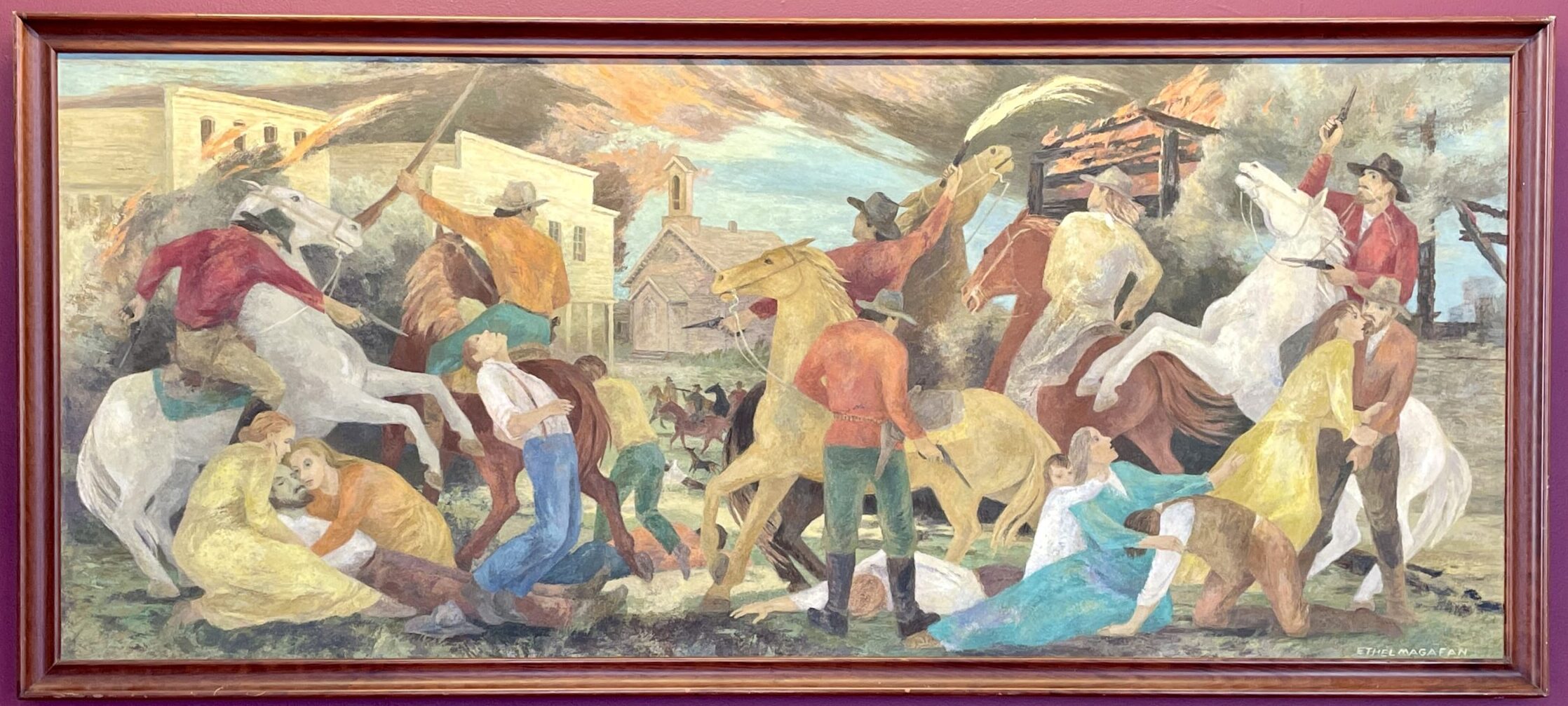
Recently, while on a trip to Missouri to promote my book A State Divided: The Civil War Letters of James Calaway Hale and Benjamin Petree of Andrew County, Missouri, I had the opportunity to explore Lawrence, Kansas for the first time. There, in addition to visiting many of the sites associated with “Quantrill’s Raid” and spending several hours in the Watkins Museum of History (which I highly recommend), my husband and I stayed in the historic Eldridge Hotel on Massachusetts Street.
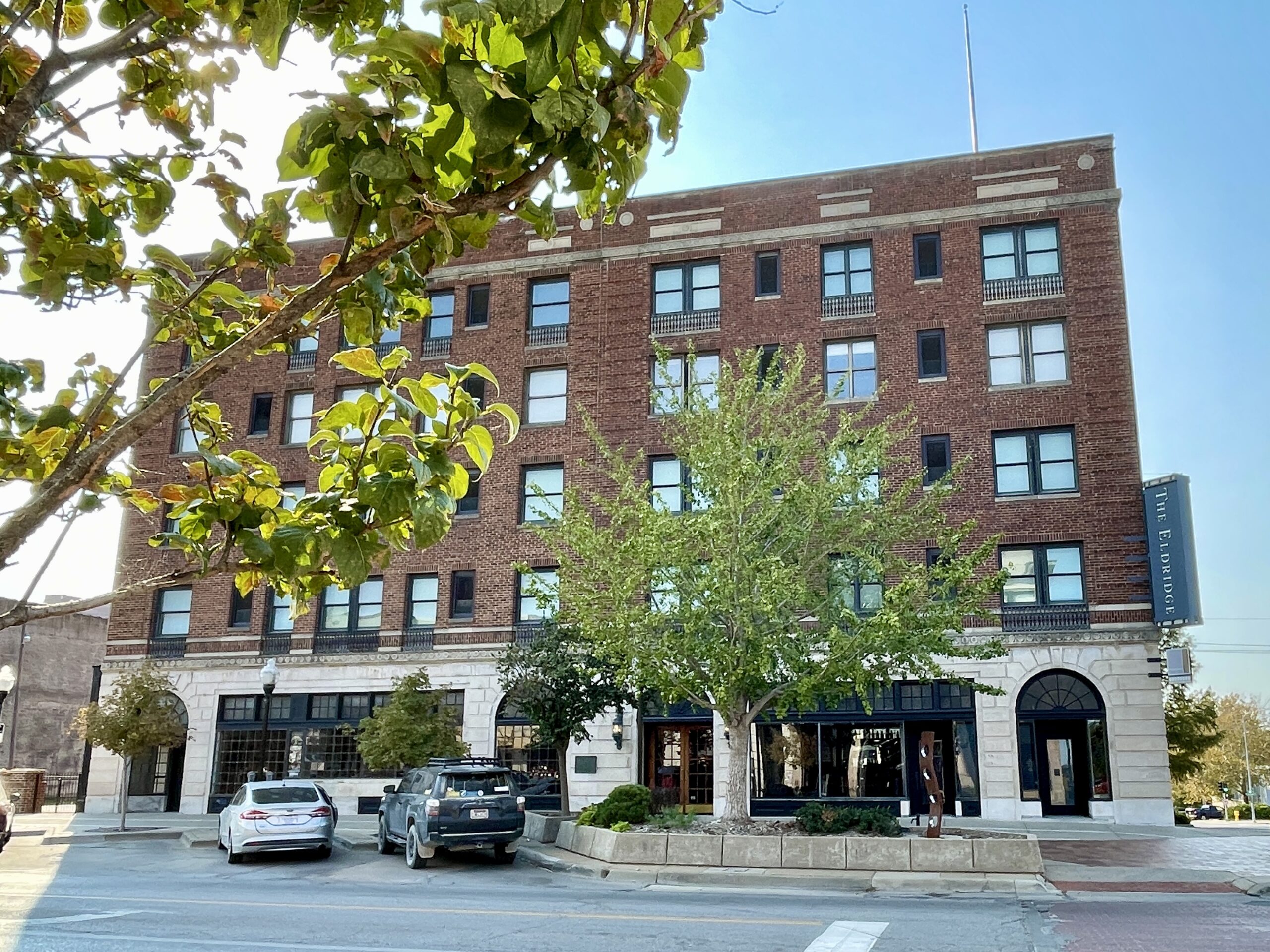
A big part of the hotel’s history is tied to the infamous raid led by William Clarke Quantrill on August 21, 1863, during which he and approximately 400 Confederate guerrillas burned down 185 houses, destroyed most of Lawrence’s downtown, terrorized its citizens, and killed between 160 to 190 unarmed men and boys. Known as the Lawrence Massacre, the violence and mercilessness of the raiders made headlines across the country. In the painting below by Ernst Ulmer, titled Blood Stained Dawn, the tall red brick building on the right is the Eldridge Hotel. A white flag of surrender can be seen hanging from one of the hotel windows.
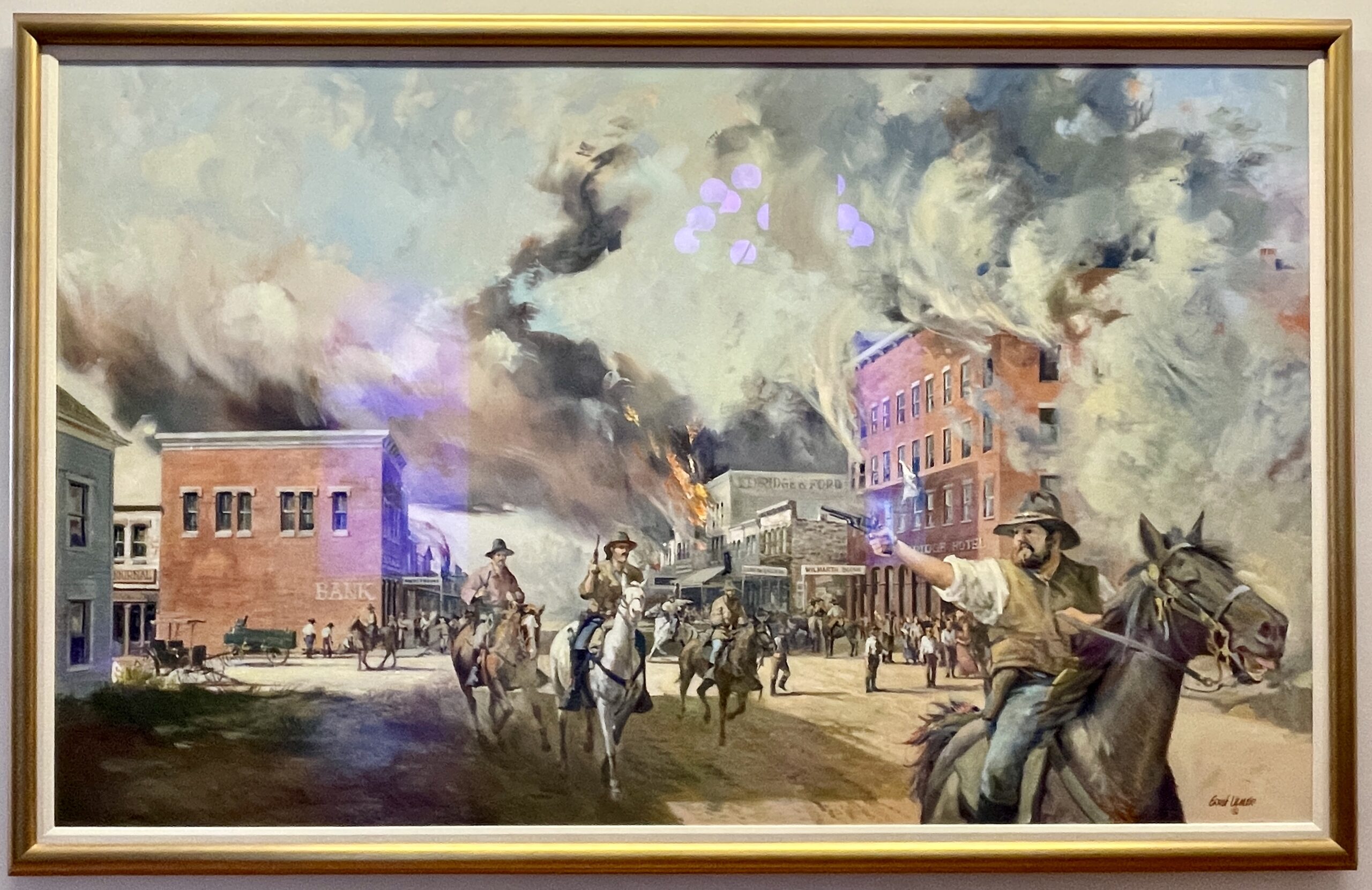
The Eldridge Hotel sits on the original site of the Free State Hotel, which was erected in 1855 by the New England Emigrant Aid Society. The society founded Lawrence in 1854 as part of its effort to bring in enough settlers to “outvote” proslavery settlers to help make Kansas a free state. They named the city after Amos A. Lawrence, a wealthy Boston merchant and philanthropist who funded the company’s settlement efforts. The original hotel was destroyed on May 21, 1856 by Sheriff Samuel Jones and his posse during the “Bleeding Kansas” border wars, but it was rebuilt by Col. Schaler W. Eldridge. The hotel was destroyed again during Quantrill’s 1863 raid, but Eldridge once again rebuilt the hotel.

In my book, even though neither James Hale nor Benjamin Petree was directly involved in the Lawrence Massacre, I discuss the raid because it is important for understanding the terror that reigned among many Kansas and Missouri citizens at the time. Both Bushwhacker and Jayhawker activity throughout the area had left many people fearing for their lives. In a letter to his family dated July 16, 1863, James specifically addresses his son-in-law Bailis Petree at one point, saying:
“Bailis, lay still and keep a sharp lookout, for they is no dependence to be put in the infernal scoundrels. You say you feel sorrow for John Closen. I don’t feel sorrow for no infernal Seesech. They lost one of the sons of bitches out to hung. They are nothing more or less but traitors to the government, and just see how many lives they have caused to be taken. I have no sympathy for them now. They are just like that snake I dreamt of. If they get a chance, they will bite; but be friendly with the devils, they may do you some damage.” [1]
Clearly, James had strong feelings about the secessionists. I am not sure who the “John Closen” is that he refers to in his letter, but it sounds like the family had previously counted the Closens as friends. Andrew County was an extremely divided part of the state, with neighborhoods, churches, and families torn apart by political differences. It even earned itself the moniker “Bloody Andrew” due to the violence that reigned within its borders. James lost one of his own brothers, Meshack Hale, to Confederate guerrillas in June 1861, and Meshack’s wife Jane and son William had been forced to flee for their lives during the night. They later joined a wagon train to Walla Walla, Washington, where they re-established their lives.
Thus, it is easily understandable why James worried so much about his family during the three years he served in the Union army. The news of the raid on Lawrence just one month after he wrote those words to Bailis must have horrified him. Lawrence, Kansas sits about 85 miles southwest of Savannah, Missouri, where the Hale and Petree families lived. While neither Quantrill nor the notorious William “Bloody Bill” Anderson, who was also part of the attack on Lawrence, conducted raids that far north, many other guerrillas who rode with them did.
So, why did Quantrill choose to attack Lawrence – a city where he had once worked as a teacher? As I explain in my book:
“The man Quantrill and his bushwhackers most sought to kill in their raid was James Lane – the Jayhawker leader and staunch abolitionist who had led the attack on Osceola in Missouri two years earlier. The guerrillas blamed Lane, as well as other Jayhawker leaders from Kansas such as Charles Rainsford Jennison and Daniel Read Anthony, for much of the destruction and death in Western Missouri. Their efforts to eliminate civilian support for guerrillas in Western Missouri through any means necessary had left much devastation in their wake.

“Even Union leaders were appalled by many of the actions these Jayhawkers took. Union Maj. Gen. Henry Halleck on January 18, 1862, in a letter to Gen. Lorenzo Thomas, described Jennison’s regiment as “no better than a band of robbers; they cross the line, rob, steal, plunder, and burn whatever they can lay their hands upon. They disgrace the name and uniform of American soldiers and are driving good Union men into the ranks of the secession army.” [2]…
“It was these Jayhawker and Red Leg atrocities, as well as Lane’s earlier attack on Osceola, that led to the Bushwhacker attack on Lawrence, Kansas, on August 21, 1863…. The Bushwhackers were also angered by the recent deaths and injuries of some of their female relatives and supporters – including three of Anderson’s sisters – when a women’s prison in Kansas City, Missouri, collapsed on August 13. The young women, all under the age of 20, had been arrested after Gen. Thomas Ewing, Jr. ordered that the female kinfolk of known guerrillas be arrested, detained, and removed from the border area. They were being held without bond or bail, awaiting trial in St. Louis….
“Hungry for revenge, Anderson joined Quantrill and about 400 bushwhackers when they snuck into Lawrence in the early morning hours of August 21 and began ransacking homes, killing civilians, looting businesses, and burning buildings…. Anderson and his men, who included George M. Todd, Archie Clement, and Frank James, ‘purportedly conducted themselves with excessive brutality” and “earn[ed] ignominious reputations for torture and mutilation.'” [3]
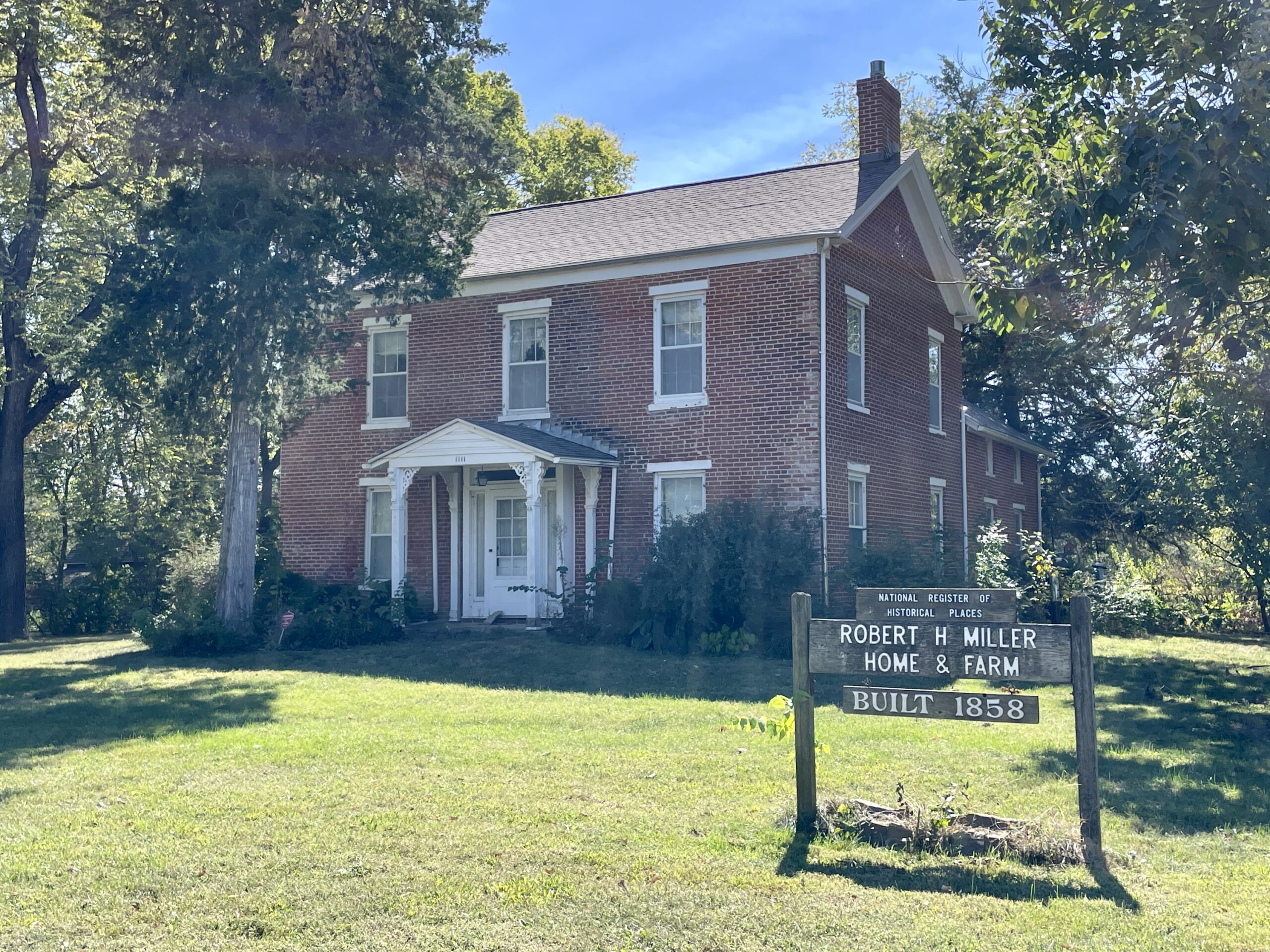
Quantrill’s raiders arrived in Lawrence just before dawn on August 21 and killed their first victim – Rev. Samuel Snyder – near the Miller Home and Farm shown above. Snyder, who was milking his cow, served as minister of the United Brethren Church and a chaplain to black Union troops. So, the Miller House was our first stop on our self-guided tour of Lawrence (we used this helpful guide).
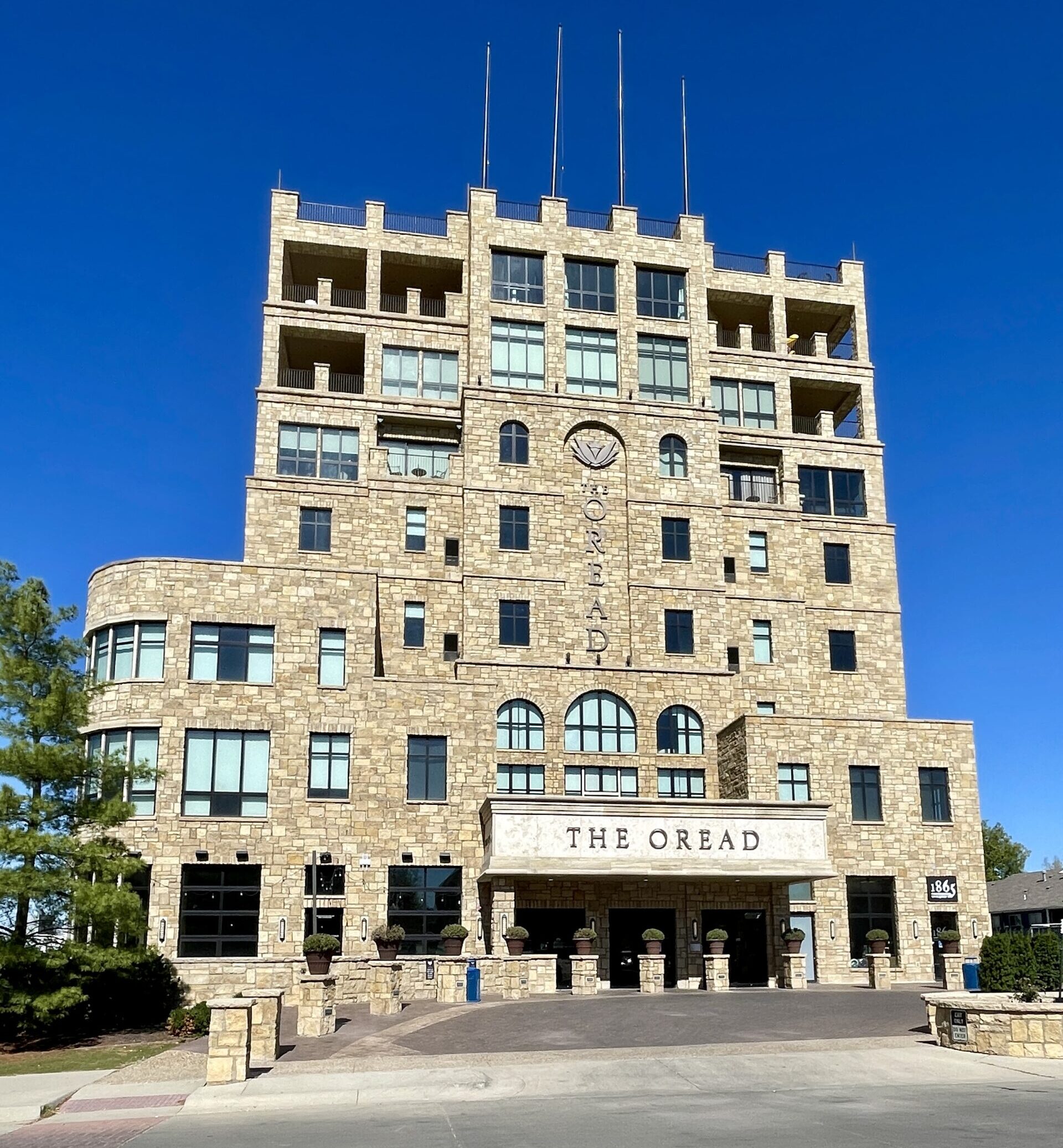
We next stopped at the Oread Hotel, which stands atop Mt. Oread, where Quantrill sent a squad to watch for Union troops. Back then, his scouts could easily see for miles across the plains from that spot. We got an even better view by heading to the hotel’s ninth floor observation deck, from which we had clear views of the surrounding countryside, as well as the nearby University of Kansas and Davis Booth Kansas Memorial Stadium, where the “Kansas Jayhawks” play.

It was Kansas Senator James Lane, one of the Confederate guerrillas’ primary targets during the raid, who popularized the term “jayhawk” in 1857. In a speech to his anti-slavery followers, he said, “As the Irish Jayhawk with a shrill cry announces its presence to its victims, so must you notify the proslavery hell-hounds to clear out, or vengeance will overtake them! Jayhawks remember, ‘Vengeance is mine, sayeth the Lord,’ but we are his agents.” [4]
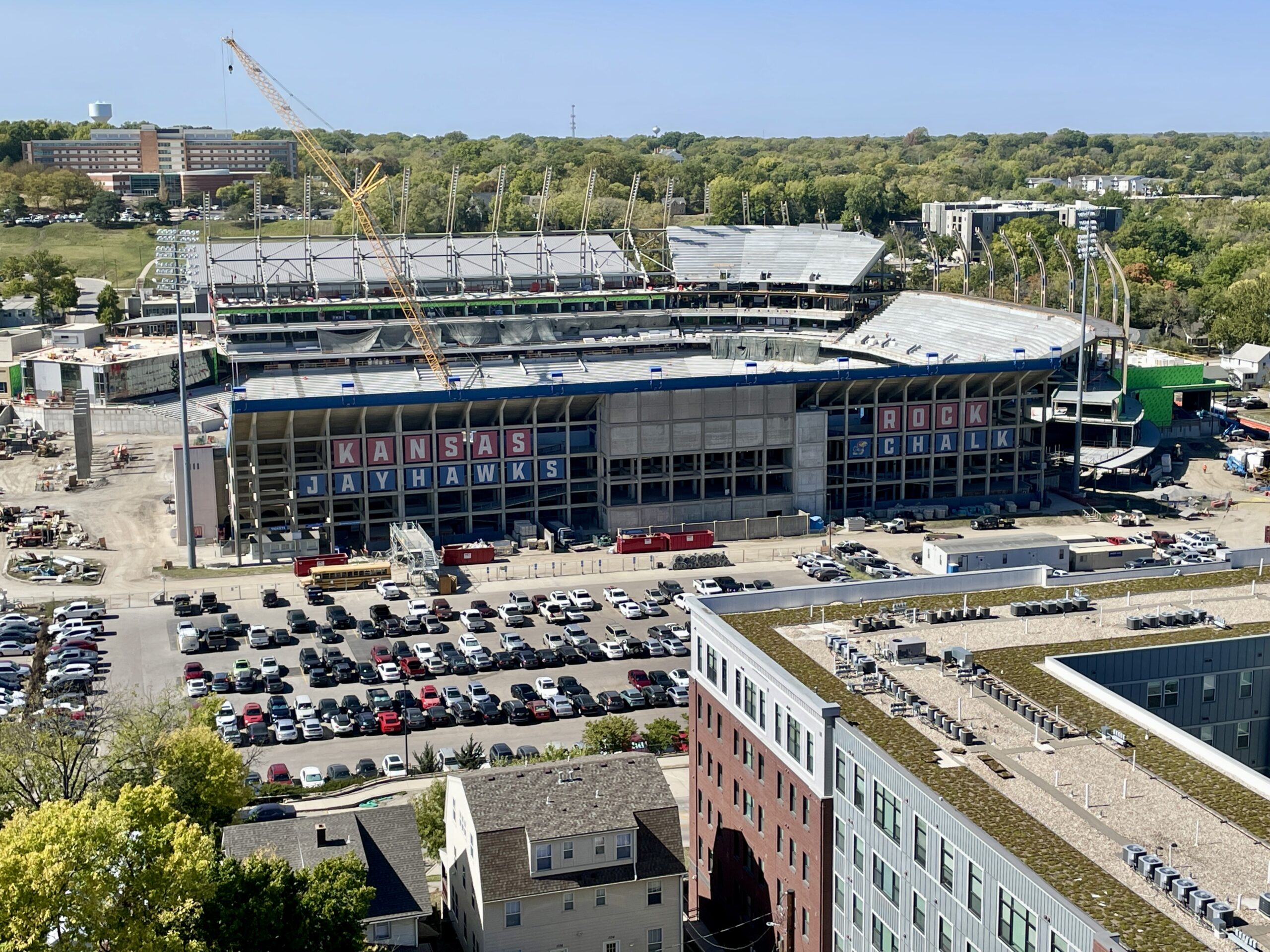
Lane, along with several other prominent Lawrence citizens and Quantrill targets, managed to survive Quantrill’s attack by hiding – in his case, in a cornfield. Hugh Fisher, a jayhawking preacher known for his exploits in Missouri, managed to hide in his cellar. Later, when guerrillas returned to torch his house, Fisher’s wife Elizabeth managed to save him by having him crouch under a heavy carpet that she lugged outside. Former Kansas Governor Charles Robinson managed to escape as well and later served as a witness to what he saw during the raid.
Other residents managed to hide in what is now Watson Park. In 1863, this area was a wooded ravine that separated downtown Lawrence from West Lawrence, with only a single bridge to cross it. West Lawrence was filled with cord fields and hilly terrain.
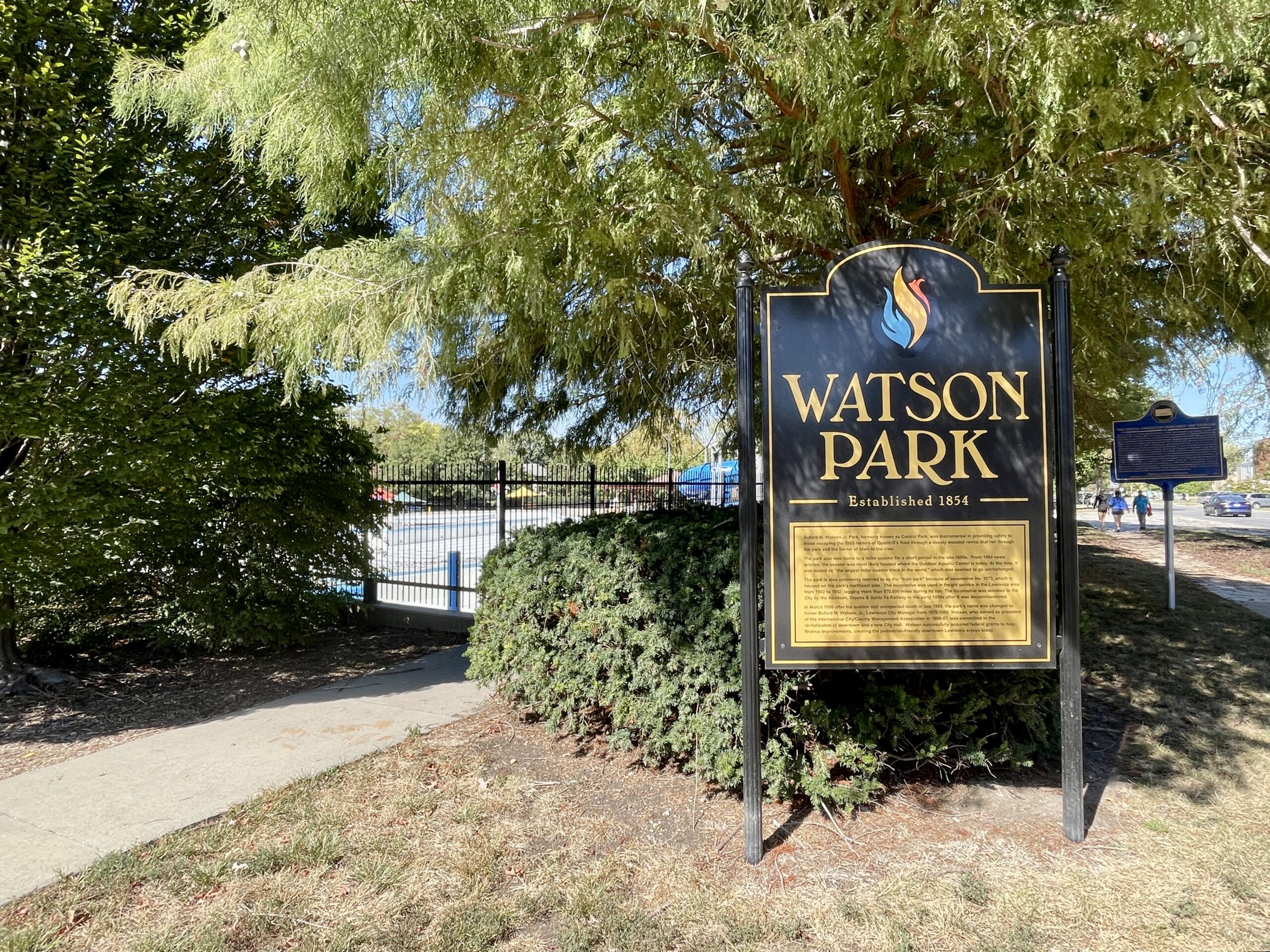
Many sites on the Quantrill Trail include markers to explain what happened at that location. One describes an encampment of twenty unarmed and un-uniformed black recruits for the 2nd Kansas Colored Infantry who fled to hide in a willow grove two miles away when they heard that Quantrill had arrived. Another describes a small encampment of white volunteers, mostly unprepared teenagers, who faced notorious guerrilla George M. Todd. Todd and his men killed 17 of the 21 recruits. Still another marks the location of the House Building, formerly Miller’s Hall, which was one of only four buildings to survive the raid and is the only one still standing.
Quantrill’s main tactical objective was the Eldridge Hotel, which at four stories tall was the largest building in town and served as the headquarters for local Union forces. In order to prevent organized resistance, he knew he must capture the hotel. Union Capt. Alexander Banks, who served as provost marshal of Kansas, knew the 50-60 men and women inside the hotel had three options: to try to fight back without weapons, to try to escape and likely get shot, or to surrender, which is what they ultimately decided to do. Quantrill let the group move to the City Hotel down the street before setting fire to the Eldridge Hotel.
Ultimately, Quantrill’s raiders burned 185 houses and most of the town’s commercial buildings, killed more than 150 unarmed men and boys, left 80 women widows and 250 children fatherless, and caused about $2 million in property damage (in 1863 dollars). After four hours of looting, arson, and murder, Quantrill’s scouts arrived to let him know they had spotted Union troops approaching. Quantrill ordered his raiders, who had assembled in South Park, to leave town.
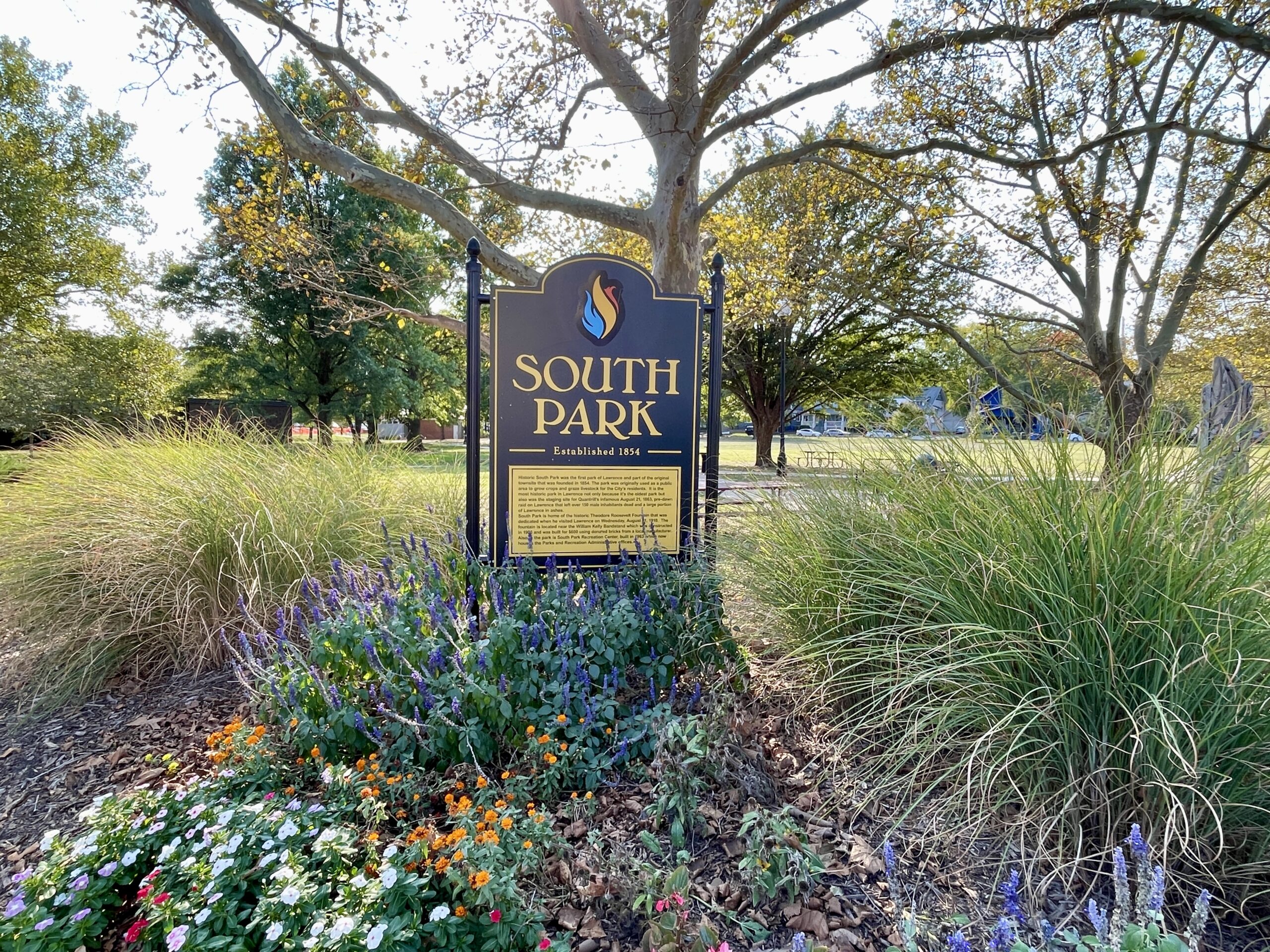
Three days later, the New York Daily Times reported the following: “Quantrill’s massacre at Lawrence is almost enough to curdle the blood with horror. In the history of the war thus far, full as it has been of dreadful scenes, there has been no such diabolical work as this indiscriminate slaughter of peaceful villagers…. There have been many displays of rebel barbarity, but none that have approached this. It would seem that even the rebel authorities in Richmond, steeped in wickedness as they are, cannot yet be so dead to all human feelings as to sanction such monstrous outrages.” [5]
However, newspapers throughout the South celebrated the attack – including in the Confederate capital of Richmond. There, the Richmond Examiner stated: “The expedition to Lawrence was a gallant and perfectly fair blow at the enemy … and the population of Kansas is malignant and scoundrelly beyond description.” [6]
After fleeing Lawrence, Quantrill ordered his men to head south, with plans to hide out in Texas for the winter. Along the way, they continued attacking settlers and causing destruction. In their most deadly attack, they killed 85 Union troops under the command of Gen. James Blunt near Baxter Springs, Kansas. Among those killed was young Johnny Fry, the first rider of the Pony Express (see this previous ECW post for further explanation).
Back in Lawrence, the citizens dragged the body of the only raider killed in the attack, Larkin Skaggs, through the street and set it on fire. They hanged another man whom they suspected of being a spy. Then they began rebuilding. Eventually, they also established Oak Hill Cemetery in 1865 to house the victims, moving their bodies from the old Pioneer Cemetery outside of town. In 1895 they also placed a monument at Oak Hill Cemetery to commemorate those who died in the raid. While my husband and I drove around the cemetery several times, we could not find the monument, so below is the photo on display at the Watkins Museum.

Endnotes:
- Graham McQuade, Tonya. A State Divided: The Civil War Letters of James Calaway Hale and Benjamin Petree of Andrew County, Missouri, 1862-1865. Self-published, 2024. Pg. 107.
- Major General Henry Halleck to Brigadier General Lorenzo Thomas, January 18, 1862. In The War of the Rebellion: A Compilation of the Official Records of the War of the Union and Confederate Armies. Washington, DC: Government Printing Office, 1880-1901, series 1, volume 8, pp. 448-449.
- Goodrich, Thomas. Black Flag: Guerrilla Warfare on the Western Border, 1861–1865. Indiana University Press, 1999. Pg. 83.
- “History of the Max Kade Annex.” Display at the Watkins Museum of History, Lawrence, Kansas, 7 Oct 2024. Photograph by Tonya McQuade.
- Goodrich, Thomas. Black Flag: Guerrilla Warfare on the Western Border, 1861–1865. Indiana University Press, 1999. Pg. 96.
- Ibid.
Thanks, Tonya, that was a wonderful tour of historic and present-day Lawrence. The stories of the individuals involved in the vicious fighting in Kansas and Missouri from the 1850s through the end of the Civil War, and even beyond, are so important to tell, both for their own sake and as a reminder of how violence and vigilantism, both then and now, are ever-present in American society. I visited Lawrence in spring 2024 and the Watkins Museum and other sites are terrific.
Nice supplement to the recent ECW podcast
very nice piece Tonya …. thanks for the tour and history lesson — excellent!